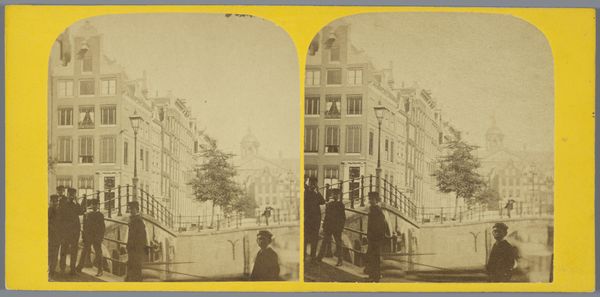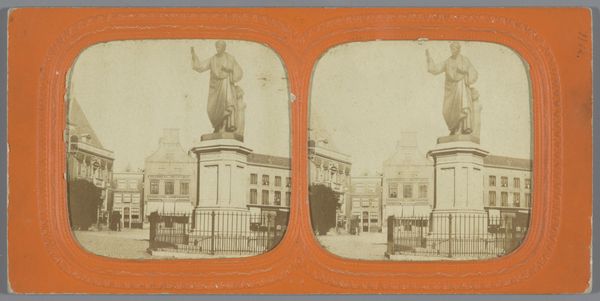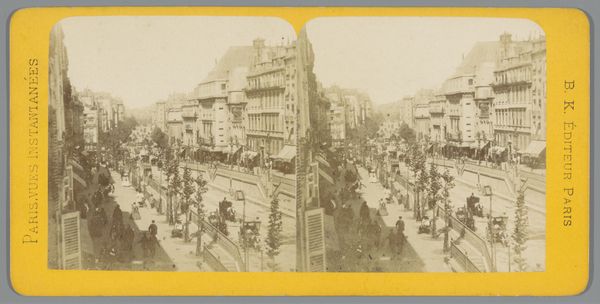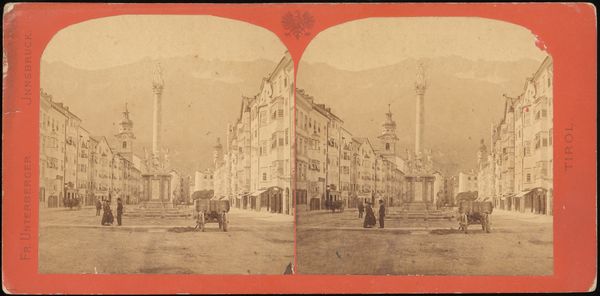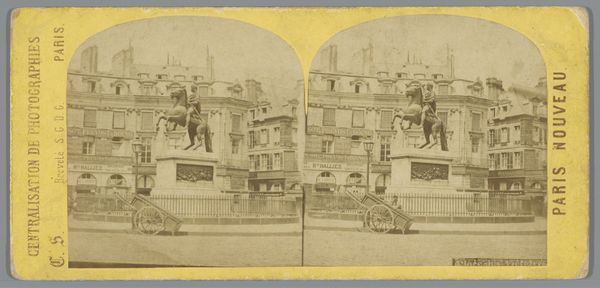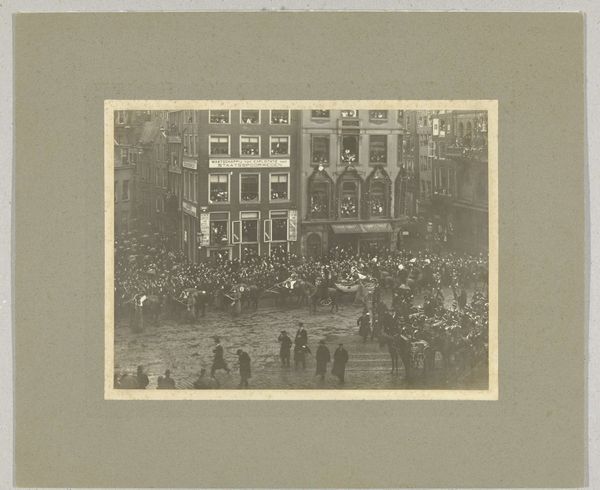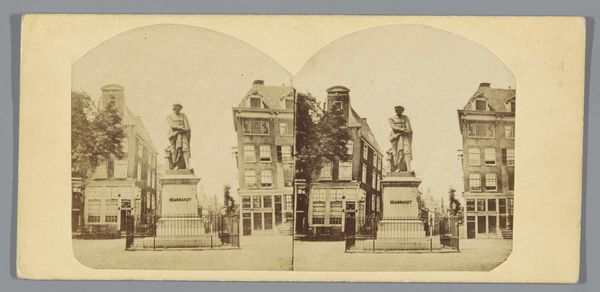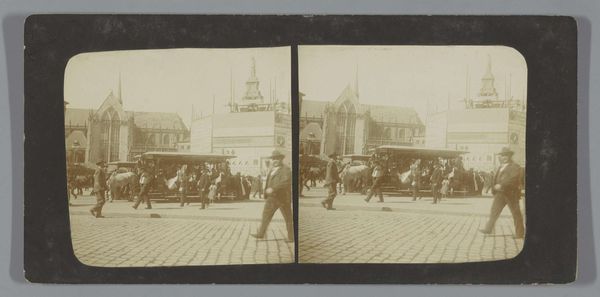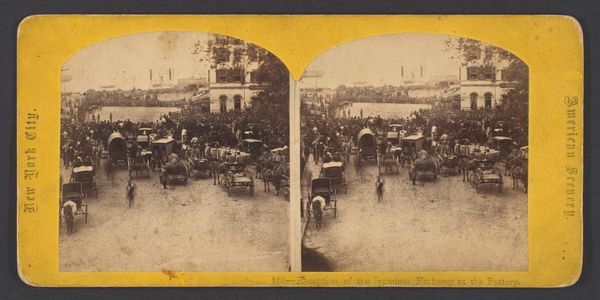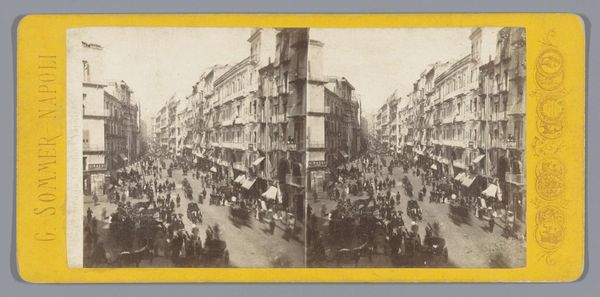
print, bronze, public-art, photography
#
toned paper
#
16_19th-century
# print
#
bronze
#
public-art
#
photography
#
framed image
#
united-states
#
cityscape
#
realism
Dimensions: 7.7 × 7.2 cm (each image); 8.7 × 17.5 cm (card)
Copyright: Public Domain
Editor: So, here we have an untitled photograph, taken sometime between 1875 and 1899. It’s a Realist cityscape, printed on toned paper, and currently at the Art Institute of Chicago. The eye is immediately drawn to this central fountain overflowing with sculptures and surrounded by a large crowd. How would you interpret this work, given its context? Curator: Well, first, we must ask: Whose gaze are we adopting? This isn't just a picture of a fountain. It's a record of a specific historical moment, likely commemorating or celebrating something significant within the community. We should be asking who had access to creating and circulating images like this during the late 19th century, and whose perspectives might be missing. Do you see any people of color or immigrants in this depiction of an American city? Editor: That's a really important point. I hadn't considered the selective nature of the crowd depicted. The lack of diversity definitely suggests something about the power dynamics at play during that time. Curator: Exactly! Consider also the function of public monuments. Who gets memorialized, and why? What narratives are being reinforced or erased in the bronze and stone? This photograph captures not just the fountain but a particular vision of civic identity—a vision that we must critically examine. What message do you think this sends? Editor: It's unsettling to realize that something seemingly innocuous like a fountain can be tied to complex issues of representation and power. This image seems to present an idealized view, ignoring underlying social inequalities. Curator: Precisely! Art is never neutral. It's a product of its time, reflecting the values and biases of those in control. Our role is to question, to contextualize, and to reveal the unspoken narratives within these images. Editor: I'll definitely look at historical photographs differently from now on, paying more attention to the power dynamics that they document. Thanks for opening my eyes. Curator: And thank you for being willing to engage in a critical dialogue, only together can we seek truth.
Comments
No comments
Be the first to comment and join the conversation on the ultimate creative platform.
